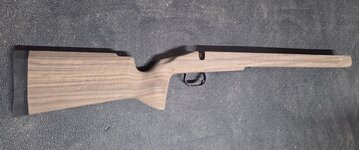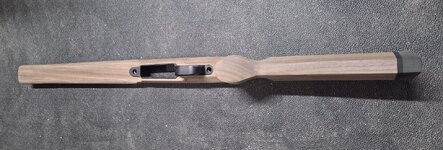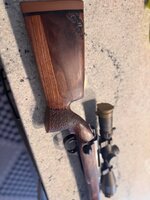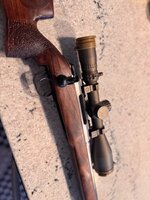Navigation
Install the app
How to install the app on iOS
Follow along with the video below to see how to install our site as a web app on your home screen.
Note: This feature may not be available in some browsers.
More options
Style variation
You are using an out of date browser. It may not display this or other websites correctly.
You should upgrade or use an alternative browser.
You should upgrade or use an alternative browser.
Tactical / Precision Rifles w/WOOD
- Thread starter AMG04
- Start date
AMG04
FNG
- Joined
- Jul 10, 2025
- Messages
- 49
I use the Pachmayr with the basket weave texture. I think it adds that "custom" touch. I dont think they make it in brown, but my fingers are crossed!
AMG04
FNG
- Joined
- Jul 10, 2025
- Messages
- 49
I was nervous about the way the grain moved through the wrist, so I ended up running a 6” x1/2” oak dowel into the grip behind the rear action screw. Time will tell if that was a smart move or not. It will get covered when I bed the action.
I’m also very happy with the stipple texture. I can see why the wood Rokstok is so well loved.
I’m also very happy with the stipple texture. I can see why the wood Rokstok is so well loved.

- Joined
- Sep 28, 2023
- Messages
- 1,873
I found someone local who had a duplicator, and let me rent time.
How long did it take to complete this single step on the duplicator?
With me being unfamiliar with the equipment it took about 4 hours.How long did it take to complete this single step on the duplicator?
You have course, medium, and fine cutting bits. And you basically just trace the stock front to back with each bit.
@AMG04 is probably much faster
AMG04
FNG
- Joined
- Jul 10, 2025
- Messages
- 49
With me being unfamiliar with the equipment it took about 4 hours.
No sir, I'm not any faster. I average about 4 hours per carve. I like to take my time, tape off the bottom metal inletting with a few layers of painters tape. Follow the edges, check fit, remove a layer, check again. Basically sneak up on the fit I want.
Most of my templates have pretty large barrel channels, so I also use transfer ink and carve those with a barrel channel inletting tool. Gradually dropping the barrel in. Then, sanding with the barrel in place for perfectly even clearance.
RockAndSage
WKR
First coat of tung oil just went on. I feel like a proud fatherView attachment 963782View attachment 963783
I might have missed you covering this, but just in case, be sure to seal the end-grain wood underneath the recoil pad. The slightest bit of moisture getting between the wood and the end plate will swell the grain up, sometimes pretty bad.
Yessir.I might have missed you covering this, but just in case, be sure to seal the end-grain wood underneath the recoil pad. The slightest bit of moisture getting between the wood and the end plate will swell the grain up, sometimes pretty bad.
Waterproof cement under the pad covering all the endgrain
huntsman22
WKR
If I had some wood, a duplicator and a modicum of you guy's skill, I wouldn't have to buy MDT TimbrCores and Woox's.....

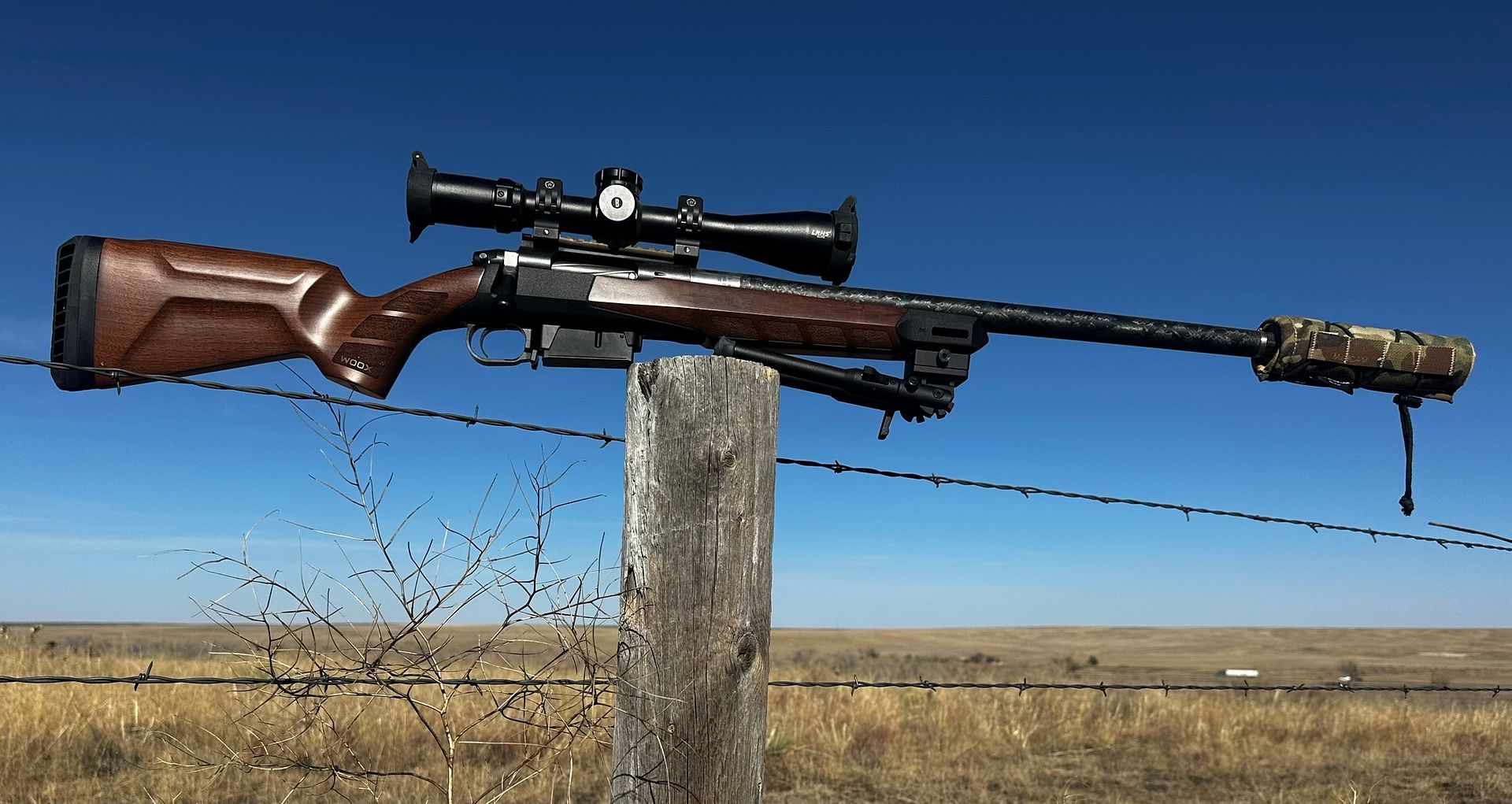


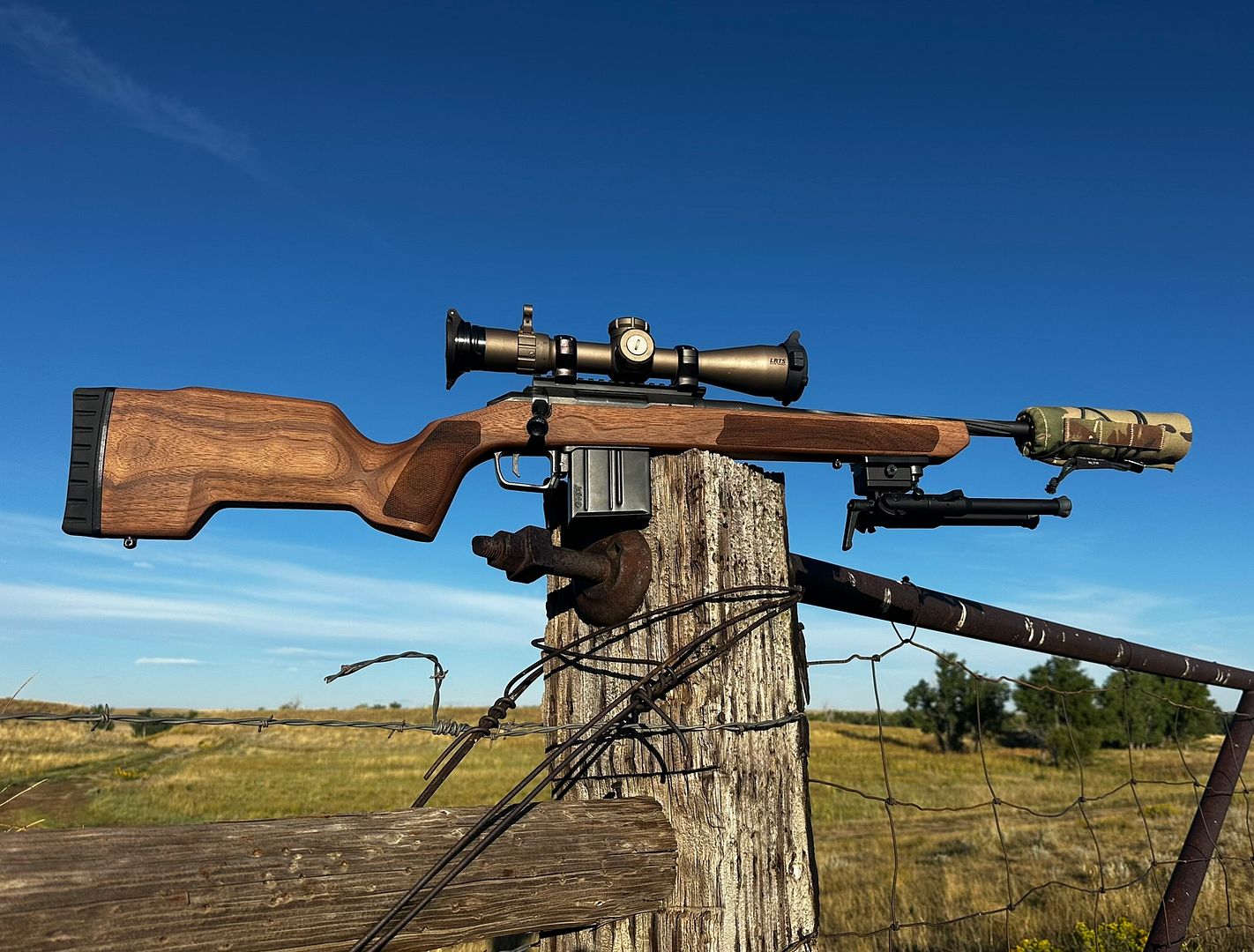
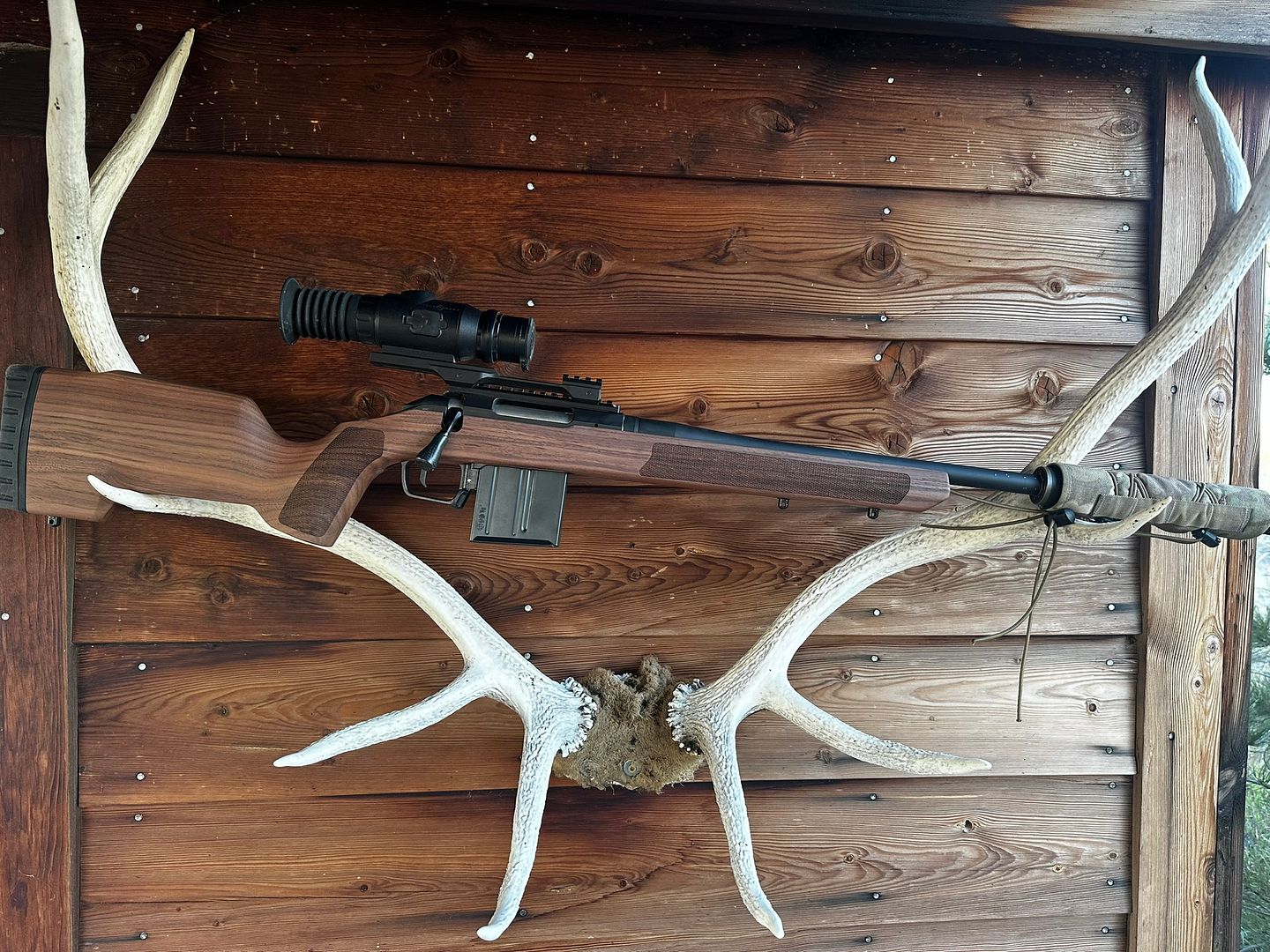








How are you liking the timbr?If I had some wood, a duplicator and a modicum of you guy's skill, I wouldn't have to buy MDT TimbrCores and Woox's.....







Their hunter bottom metal caught my eye recently
huntsman22
WKR
I like them a lot. Just wish they were oil finished instead of whatever sealer they use on 'em....
Decker9
WKR
The first one I carved, i used foam sanding blocks and just kept getting waves in the wood. I guess the foam was applying uneven pressure. I no longer use them.
For 80 & 120 I use an orbital sander. The harder flat sanding disk creates nice surfaces. It removes a lot of wood, and fast though... so I keep a very close eye on all my lines. Sand a little, check. Sand some more, repeat. 80 & 120 gets rid of all the tool marks and dimples etc.
For large flat areas, like the bottom of the forend, and the top lines of the forend where I want flat and even lines, I either lay a full sheet of sand paper on the hard work bench surface or ill wrap a hard wood block in sand paper to keep thinks flat.
220, 320 & 400 I cut 1-1.5" wide strips about 3 inches long and tri-fold them. I sand everything with that 1 by 1 paper. It helps get in all the nooks and follows the curves well.
Something an old stock maker showed me, was using a knife as a scraper (scrapers in general, but the knife seems to work great). It works great for shaping and for scraping shaping out little transitions, like in behind the grip, thumb cutouts, and such. I find it saves me a lot of course sand paper work and peels wood off a little quicker I think.
Another sanding trick for the long flats, is wrapping sand paper around a big file. Iv been using the 2” wide sticky back sand paper and sticking it to a big worn out file, seems to help keep the surface flat.
Just a couple more tricks for the toolbox!!
Keep up the good work!
This winters project I’m working on, due date late February, to be raffled off at the B.C sheep show
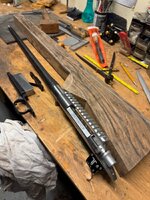
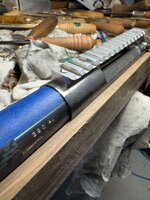
ShootOkHuntWorse
WKR
- Joined
- May 23, 2020
- Messages
- 323
Dream rifle right there!Tung oil may be my new favorite gun finish.
View attachment 965976View attachment 965977View attachment 965978
AMG04
FNG
- Joined
- Jul 10, 2025
- Messages
- 49
Finished productSeeing the brown with walnut really makes me wish I had used one on this walnut stock I carved.
View attachment 963809
View attachment 963810
View attachment 963811
View attachment 963812

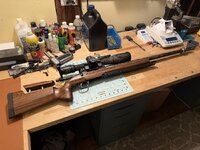
NWBLKTAIL
WKR
If you got a spare one of those laying around go ahead and send it on over pal.Tung oil may be my new favorite gun finish.
View attachment 965976View attachment 965977View attachment 965978
That thing is sweet
AMG04
FNG
- Joined
- Jul 10, 2025
- Messages
- 49
Gorgeous man. Simply gorgeous
Q_Sertorius
WKR
- Joined
- Jun 1, 2024
- Messages
- 2,592
This thread should be marked NSFW.
Similar threads
- Replies
- 2
- Views
- 805
Featured Video
Latest Articles
- TT#64 Josh Boyd Elk Hunting Strategies for Every Season
- Aaron Davidson of Gunwerks
- TT#63 Dirk Durham’s Art of Elk Calling
- BIG Buck Stories with the Dirty Giants Podcast
- TT#62 Brian Barney Hunting Bulls without Calling
- Hoyt Alpha AX-2 SD Review
- Kuiu Kenai vs Outdoor Vitals Vario Hooded Jacket Review
- Hoyt RX-9 Ultra Review
- Hunting Vampire Bucks & Building an Optics Kit
- Darton Sequel ST2 35 Review


